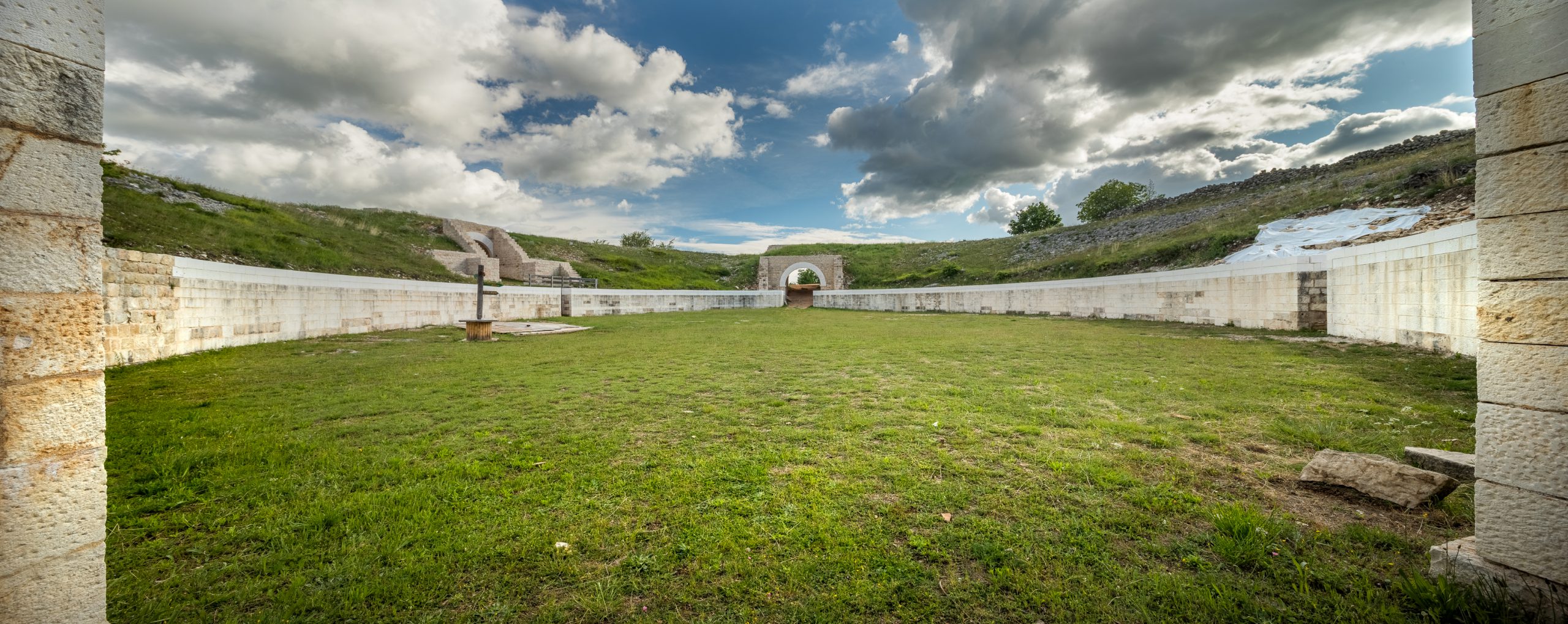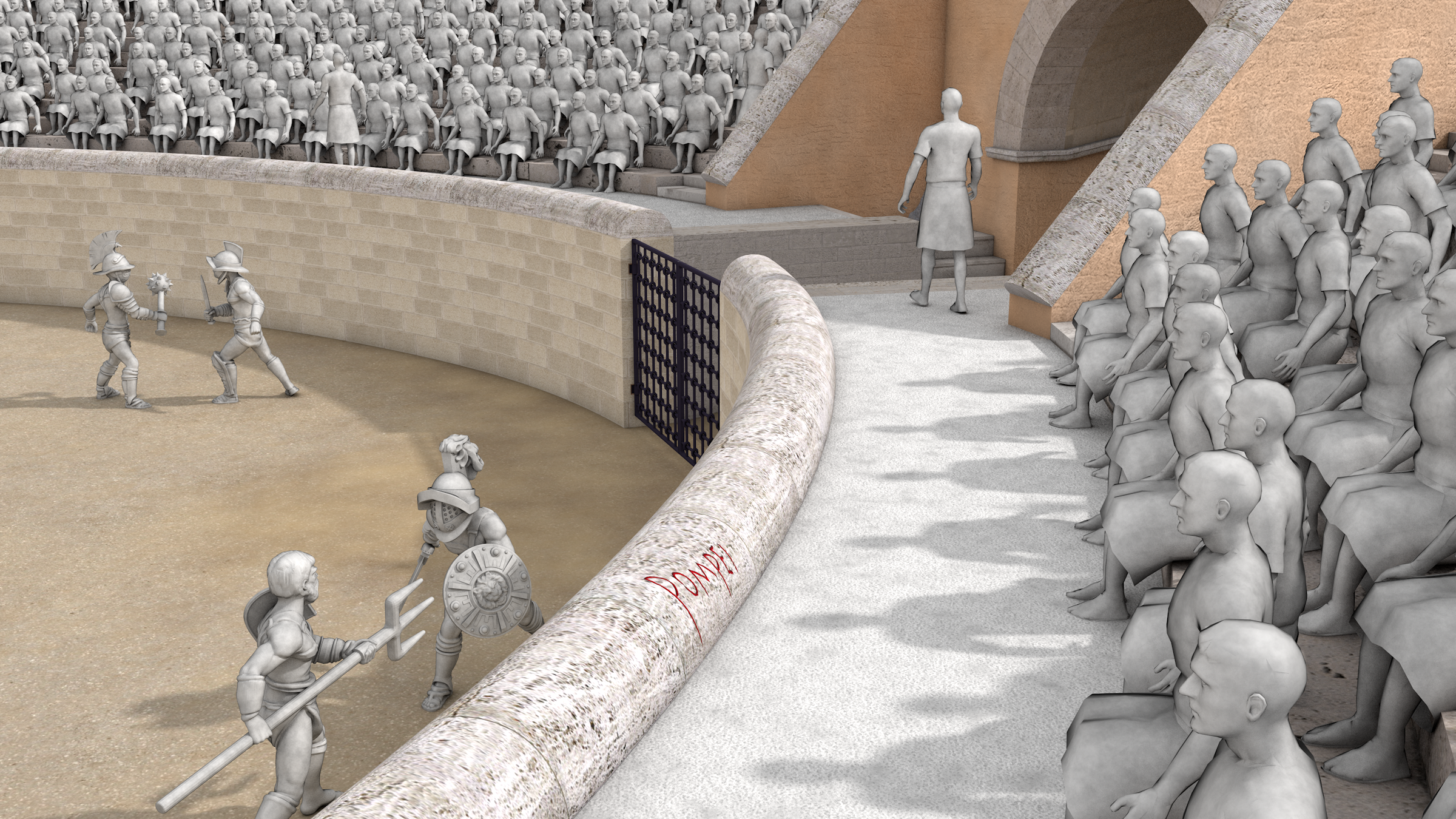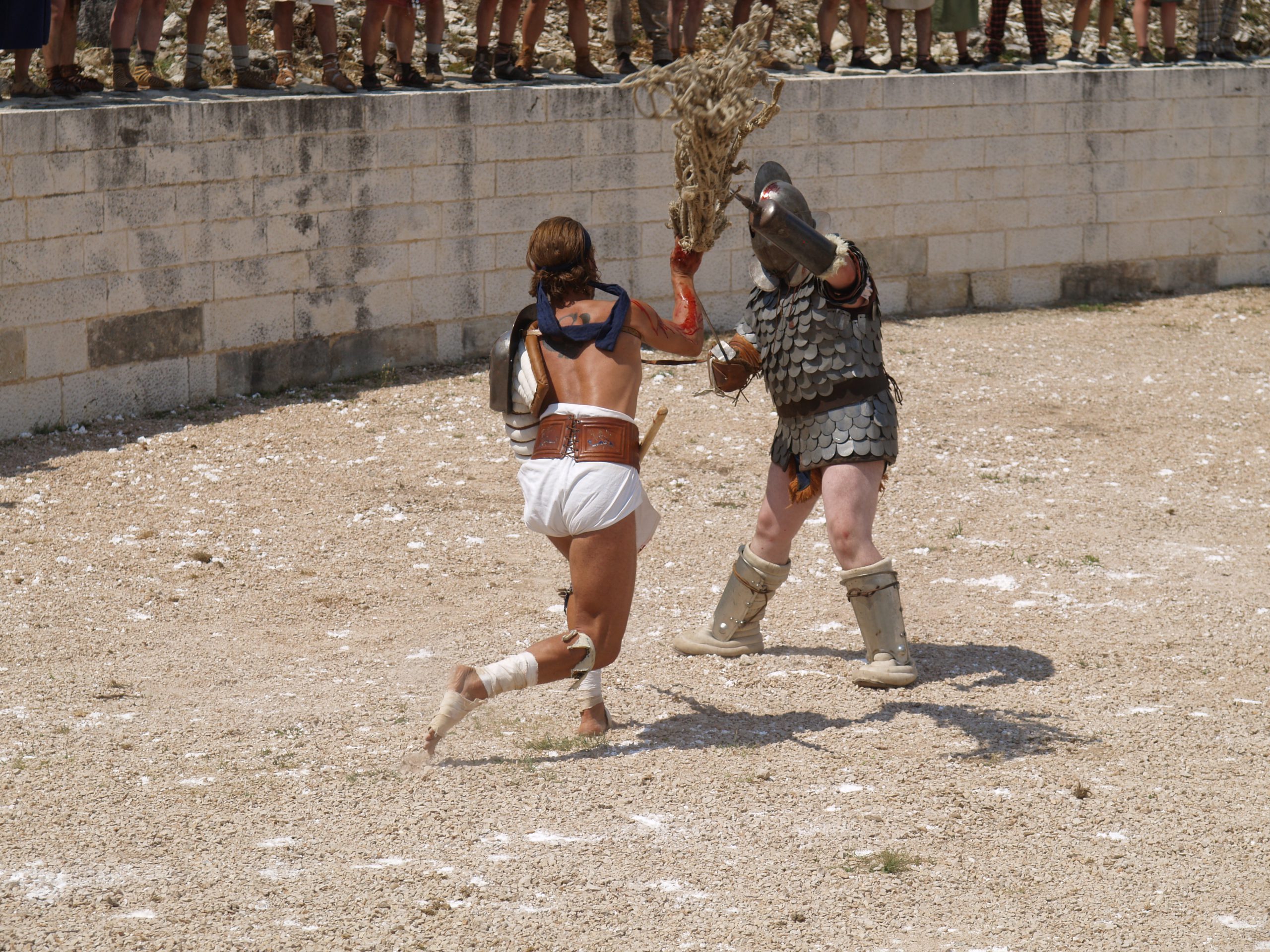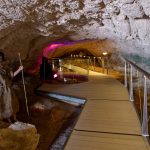The amphitheatre in Burnum
Bread and circuses! Gladiator fights were the full expression of the special lifestyle of the Romans and one of the forms of Romanizing the local population.
Roman rulers, especially the Flavians, encouraged the construction of amphitheatres as an exceptionally effective means to Romanize immigrants, inhabitants of canabae (civilian settlements by camps), and the native population. In this manner, all non-Romans were won over to the Roman way of life, which contributed to the homogenization of the Roman Empire, composed of many peoples who spoke different languages and differed significantly from each other in terms of culture. The higher Roman standard of civilization, which included gladiatorial fights and other spectacles, attracted the local inhabitants to assimilation, which could be most easily and quickly be carried out near a military camp.
Excavations of the Burnum amphitheatre began in 2003, and still continue today. A reason and impetus was the discussion in the media, but also in scientific circles, as to whether or not Burnum had an amphitheatre. After the existence of the amphitheatre at Burnum was confirmed, systematic archaeological excavation began.
The amphitheatre in Burnum is the only preserved military amphitheatre in Croatia. The structure is oval in shape and belongs typologically to amphitheatres that had four vaulted entrances, and it is thought that it could accommodate between 6000 and 10000 spectators. The Romans utilized the natural configuration of the terrain in its construction, i.e. a sinkhole, and archaeological investigation has established two construction phases of the amphitheatre. The first phase can be dated on the basis of small finds to the reign of the emperor Claudius, and it included leveling the terrain, building the entrances, and the walled structures that enclose the area for the spectators. Along with the construction of the amphitheatre and the military training grounds in the immediate vicinity, the entire military camp was renovated during the reign of the emperor Claudius. These large scale construction works are tied to the famous rebellion against the governor of the province of Dalmatia, Lucius Arruntius Scribonianus, who intended to usurp the throne with the aid of two Dalmatian legions – legio XI from Burnum, and legio VII from Tilurium. According to tradition, the legionaries refused to obey their governor because of bad omens and stood on the side of the emperor Claudius. Therefor the emperor, as a token of his gratitude, renovated the camp and rewarded the soldiers with an amphitheatre for entertainment, and gave the honorary title of Claudia Pia Fidelis, which both Dalmatian legions bore from 42 AD. The amphitheatre acquired its final form during the reign of the emperor Vespasian when it was reconstructed, with arches that closed off the entrances. During the archaeological excavations of the southern entrance, a monumental inscription of the emperor Vespasian was discovered that originally stood above the entrance, which unequivocally proves that it was an architectural memorial to the personal donation of the emperor. The completion of construction of the amphitheatre can be precisely dated on the basis of the inscription to the eight year of the reign of the emperor Vespasian, i.e. in 76/77 AD. The amphitheatre was a gift from the emperor Vespasian to the legion who at that time was stationed in the camp and bore his family name – legio IIII Flavia Felix.












When an individual unit stayed longer in a single camp, in addition to training, the soldiers also needed entertainment. Hence amphitheatres, like military training grounds, were a part of the logistics of permanent military camps.
The military training grounds (campus) were located opposite the amphitheatre, on the southeastern side. The soldiers had to maintain their physical strength and skills, as well as regularly practice tactical formations, for which a large area was required.
On the other hand, in the amphitheatre military parades could be held, as well as individual or group exercising by small units, along with various tournaments, parades, duels, etc. However, the main purpose of the military amphitheatres nonetheless were gladiatorial fights, which were held for the soldiers’ amusement and entertainment. In the case of Burnum, the amphitheatre served primarily for the needs of the soldiers of the legion and auxiliary troops, but certainly the inhabitants of the satellite civilian settlements, and the close and more distant agglomerations of various types would also have found entertainment here.






